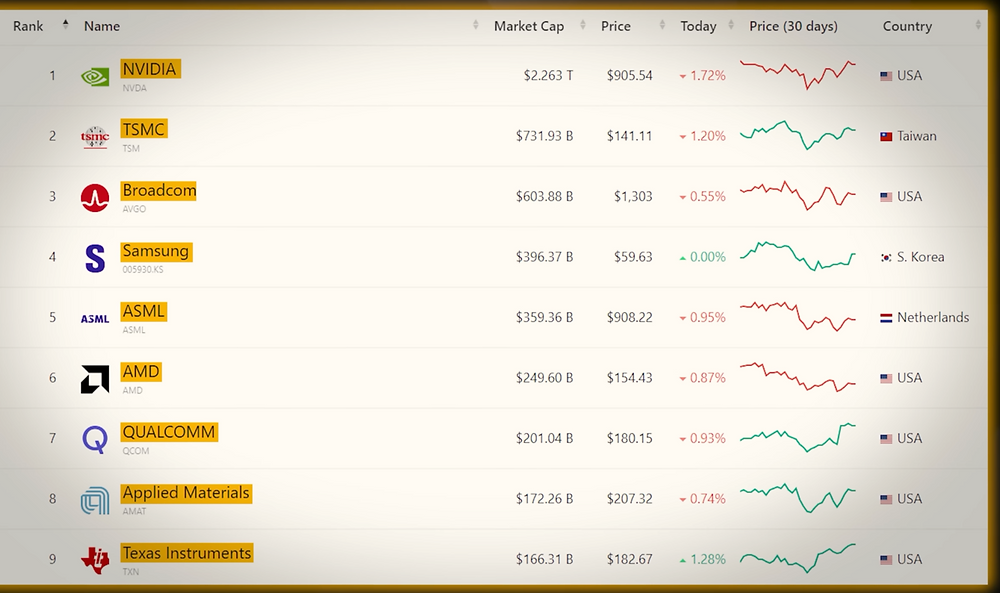Pretty incisive article, and I agree.
In retrospect, I think the marketing/sales/finance corporate leadership idiocy that’s intensified over the last couple decades is the single biggest contributor to my deep sense of frustration and ennui I’ve developed working as a software engineer. It just seems like pretty much fucking nobody in the engineering management sphere these days actually values robust, carefully and thoughtfully designed stuff anymore - or more accurately, if they do, the higher-ups will fire them for not churning out half-finished bullshit.
That’s why I like my steam deck so much: the design is so thoughtful and adapted to its own needs, and unfortunately that’s a rare sight lately (not just in technology).
Would’ve probably turned out different if Valve was beholden to shareholders and the never-ending hunger for a higher stock price. The push to drive “shareholder value” is one of the most destructive forces if not the most destructive force we’re dealing with these days.
Yeah… I’ve been thinking about popping for one for a while now. I should probably just go for it.
Out of curiosity, is the etched AR glass on the top end model actually worth it, or is that more of a gimmick?
I bought the LCD without and later switched to oled with. Honestly. I barely notice it. Go for the cheapest oled option. That is a change you will notice, unlike the the etching.
Good tip. Thanks, friend!
Just to add on to what others have already said, you can get an anti-reflective screen protector to accomplish the same task. If you think you’ll be playing in environments with a lot of light, then I’d spring for it.
You can get a screen protector that has the same effect.
Removed by mod
2009 era was also when Intel leveraged their position in the compiler market to cripple all non-Intel processors. Nearly every benchmarking tool used that complier and put an enormous handicap on AMD processors by locking them to either no SSE or, later, back to SSE2.
My friends all thought I was crazy for buying AMD, but accusations had started circulating about the complier heavily favoring Intel at least as early as 2005, and they were finally ordered to stop in 2010 by the FTC… Though of course they have been caught cheating in several other ways since.
Everyone has this picture in their heads of AMD being the scrappy underdog and Intel being the professional choice, but Intel hasn’t really worn the crown since the release of Athlon. Except during Bulldozer/Piledriver, but who can blame AMD for trying something crazy after 10 years of frustration?
Historically AMD has only been able to take the performance crown from Intel when Intel has made serious blunders. In the early 2000s, it was Intel commiting to Netburst in the belief that processors could scale past 5Ghz on their fab processes, if pipelined deeply enough. Instead they got caught out by unexpected quantum effects leading to excessive heat and power leakage, at the same time that AMD produces a very good follow-on to their Athlon XP line of CPUs, in the form of the Athlon 64.
At the time, Intel did resort to dirty tricks to lock AMD out of the prebuilt and server space, for which they ultimately faced antitrust action. But the net effect was that AMD wasn’t able to capitalize on their technological edge, Ave ended up having to sell off their fabs for cash, while Intel bought enough time to revise their mobile CPU design into the Core series of desktop processors, and reclaim the technological advantage. Simultaneously AMD was betting the farm on Bulldozer, believing that the time had come to prioritize multithreading over single-core performance (it wasn’t time yet).
This is where we enter the doldrums, with AMD repeatedly trying and failing to make the Bulldozer architecture work, while Intel coasted along on marginal updates to the Core 2 architecture for almost a decade. Intel was gonna have to blunder again to change the status quo – which they did, by betting against EUV for their 10nm fab process. Intel’s process leadership stalled and performance hit a wall, while AMD was finally producing a competent architecture in the form of Zen, and then moved ahead of Intel on process when they started manufacturing Zen2 at TSMC.
Right now, with Intel finally getting up to speed with EUV and working on architectural improvements to catch up with AMD (and both needing to bridge the gap to Apple Silicon now) at the same time that AMD is going from strength to strength with Zen revisions, we’re in a very interesting time for CPU development. I fear a bit for AMD, as I think the fundamentals are stronger for Intel (stronger data center AI value proposition, graphics group seemingly on the upswing now that they’re finally taking it seriously, and still in control of their destiny in terms of fab processes and manufacturing) while AMD is struggling with GPU and AI development and dependent on TSMC, perpetually under threat from mainland China, for process leadership. But there’s a lot of strong competition in the space, which hasn’t been the case since the days of the Northridge P4 and Athlon XP, and that’s exciting.
Intel was ahead of AMD ever since core 2 duo, in 2006. Amd was behind for almost 10 years and it wasnt until ryzen and especially zen 2 that AMD pulled ahead. And then with zen 3 and zen 4, AMD wiped the floor with intel.
7800x3d is the best cpu ever made for gaming and it succeeded the 5800x3d which was already a legendary cpu. Intel has been getting wrecked so hard that they are literally using tsmc to manufacture their cpus, an obvious admission that their manufacturing is behind the competition(amd is fabless and is also using tsmc).
Intel has the ability to come back on top, at least as far as x86 cpus are concerned. The question is whether x86 is even relevant anymore, considering the insane efficiency gains shown by apple’s m series and even qualcomm’s upcoming snapdragon x series.
The question is whether x86 is even relevant anymore
Also RISC-V, though that is probably a few years away at least.
Ran by Israelis? I’m looking at the current Board of Directors for Intel and none jump out as Israeli. Some have names that might sound Jewish, but make that leap to calling them Israeli is some Nazi-level shit.
I did a cursory Google and found an article from 2014 about David Perlmutter, who at that time had been the highest Israeli in the Intel corporate structure. He was Intel’s Executive Vice-President, General Manager of Intel Architecture Group and Chief Product Officer. I’m certainly not about to waste my time searching the biographies of every current C-Suite and Board member, but I highly doubt it’s an “Israeli run” company. The more I see this shit the more I’m starting to think inbred Nazis are leveraging the current anger at Israel to spread their anti-semitic rhetoric.
Yeah, I think the conflict has been an excuse to bring back the hate that lead to the holocaust. Disliking a leader or a countries actions is one thing. Singling out a group of people because of there religion or origin is not. It doesn’t matter if it is Jewish, African, Asian or anything else. Don’t hate an entire race or group.
The only link I am aware of is that Intel operates an R&D center in Haifa (which, it happens, is responsible for the Pentium M architecture that became the Core series of CPUs that saved Intel’s bacon after they bet the farm on Netburst and lost to Athlon 64). Linkerbaan’s apparent reinvention of the Protocols of the Elders of Zion to the contrary, the only real link seems to be that Haifa office, which exists to tap into the pool of talented Israeli electronics and semiconductor engineers.
Removed by mod
deleted by creator
Removed by mod
instead of in America
For one, what do you think makes a company from X country?
Technically where it is headquartered, but Israel has 3, just 3, fabrication plants for manufacturing, not development or research.
All manufacturing of Intels high tech chips (20A which is 2nm, and the 5nm chips) will be manufactured in the US, while slightly less advanced, but still advanced chips like the 10nm, are 4/5 made in US, the middle of the road chips, are about half and half, but Intel 4 is made in Ireland, but anything above 22 nm is US made, and 22 nm manufacturing varies.
If you base it on manufacturing, then no, it is not Israeli. It is still American.
All developmental facilities are in the US, mostly in Oregon.
If you base it on development, then no, it is not Israeli. It is still American.
All research facilities are in the US, such as the RP1.
If you base it on research, then no, it is not Israeli. It is still American.
Intel is headquartered in California.
Thus, it is still a US company.
Those are just Intel owned locations, I’m not sure about the individual work forces, so I could not answer that.
But about 43% of their workforce is in the US. The US workforce for Intel is 62k, divided by the total number of Intel employees, 131,900, equals about 0.43, so 43%. There are 12,000 Israeli employees, so, using that same math, about 9%. Their largest workforce is in the US.
In conclusion, while Intel has a large presence in Israel, it is a US tech company, and using your own logic, it remains that way.
Also I’m not defending Israel at all. I have not mentioned my views on Israel or the current conflict at all. I am not really defending Intel either, just offering evidence that they are an American company, not an Israeli company.
I am not using calls of antisemitism to defend Israel, I’m saying that equating some with a potentially Jewish last name as not only Jewish but Israeli to boot is racist as hell and definitely 100% antisemitic.
Fwiw, Israel paid Intel at least $3.2 billion dollars to build of fabs there. That isn’t Intel supporting Israel, that’s Intel being a corporation in a capitalist system and doing the thing that makes the most sense financially. Ethically grey? Yes, at best, but it is not “supporting Israel”. Look at the makeup of the current battlespace in Ukraine. It’s dominated by missiles, drones, wireless jammers, starlink terminals, etc. All that shit needs computer chips. Russia was scavenging circuit boards off of home appliances because of their limited access due to sanctions. WW2 era warfare required an army to maintain steady control over oil refined oil, which had never really been a humongous issue previously. Warfare in 2024 requires access to silicon fabrication. If you can’t maintain that supply line you can’t continue building drones, missiles, whatever. Israel is surrounded by countries that would blockade them in the event of total war in the region. Having fab facilities in country makes complete sense from their perspective. Once again, Intel getting paid to build a fab somewhere isn’t tacit approval of the actions of the government in that place, it’s Intel doing what any publicly traded company would do, maximize profit.
Like I’m absolutely not shilling for Intel here, I do not own any discrete Intel products. I have shit with Thunderbolt, but there’s not much I can do about that. I’m not defending Israel in their current invasion of Gaza.
All I’m saying is that Intel is an American company, and that it makes sense for Israel to want to have fab facilities in country due to their geopolitical situation. An American company doing business in the country of a US ally is not surprising. If you don’t like it, pressure your elected officials to embargo Israel and to put them on the ITAR list. At that point Intel will have to shut down its operations in Israel.
Dude, your waist effort. They are a troll with the goal of stirring up shit. Talking to them accomplishes nothing of value.
Removed by mod
this is what i was thinking. the article opens by saying it was ubiquitous in the 2000s, but thats only because of aggressive marketing and unfair monopolistic practices.
athlons were faster at lower clockspeeds for a big chunk of the 2000s and no one batted an eye.
Not just that - intel did dual core CPUs as a response to AMD doing just that, by gluing two cores together. Which is pretty funny when you look at intels 2017 campaign of discrediting ryzen by calling it a glued together CPU.
AMDs Opteron was wiping the floor with intel stuff for years - but not every vendor offered systems as they got paid off by intel. I remember helping a friend with building a kernel for one of the first available Opteron setups - that thing was impressive.
And then there’s the whole 64bit thing which intel eventually had to license from AMD.
Most of the big CPU innovations (at least in x86 space) of the last decade were by AMD - and the chiplet design of ryzen is just another one.
Admired AMD since the first Athlon, but never made the jump for various reasons–mostly availability. Just bought my first laptop(or any computer) with an AMD chip in it last year, a ryzen7 680m. There is no discrete graphics card and the onboard GPU has comparable performance to a discrete Nvidia 1050gpu. In a 13" laptop. The AMD chip far surpassed Intel’s onboard GPU performance, and Intel laptop was ~30% more from any company. Fuck right off.
Why doesn’t this matter to Intel? Part of why they always held mind space and a near monopoly is their OEM computer maker deals. HP, DELL, etc. it was almost impossible to find an AMD premade desktop, laptops were out of the question.
I believe my first amd was a desktop athlon around 2000. I needed a fast machine to crunch my undergraduate thesis and that was the most cost effective.
In recent years I can’t buy amd for a strong desktop, went with xps and there’s no options. Linux is a requirement for me, so it narrowed down my choices a lot. As you’d expect, it’s a horrible battery life compounded by being forced to pay and not choose an NVIDIA card that also has poor drivers and power management.
x86 and it’s successor amd86 instruction set is a Pandora box and a polished turd, hiding things such as micro instructions, a full blown small OS running in parallel and independent of BIOS, and other nefarious bad practices of over engineering that is at the roots of spectre and meltdown.
What I mean is I prefer AMD over Intel, but I prefer riscv over both.
deleted by creator
Cheap intel stock going then
I’d be very surprised if they don’t find a way to bounce back, they’ve done it before
Maybe. In the past they have always been able to rely on their dominance in the PC market. With consumers shifting away from this, I don’t think it’s so straight forward and in other emerging markets like AI they are way behind.
At least they are finally putting actual money into R&D. This article was a really good read. Will be interesting to see how and if Intels investments pay off.
Yup, they need to fund engineering. That’s what AMD did, and it turns out that’s a good strategy. Companies need to provide value to customers, and then marketing’s job is easy.
I am also betting they will bounce back; hopefully this is indeed a good opportunity to buy the stock for cheap.
Removed by mod
Intel is an American company.
If you’re bothered by Israeli involvement you should avoid all the companies in that list, including AMD, as they are all invested in Israel and have Israeli teams.
Even large Chinese tech companies like Xiaomi, which has an R&D center in Israel, are invested in Israel.Removed by mod
Tiktok is owned by ByteDance, which is headquartered in China and was founded by Chinese.
Intel is headquartered in the USA and was founded by Americans.Intel is investing in Israel for the same reason other companies like Nvidia do (who just acquired another Israeli startup last month and has 7 R&D centers in Israel). Innovation and talent.
Removed by mod
Nvidia is also currently building their most powerful supercomputer in Israel. And the CEO has also mentioned the Israeli startup Mellanox (which they acquired for 7 billion USD) as an important part of Nvidia’s success.
He also said “Israel is home to world-leading AI researchers and developers creating applications for the next wave of AI,” as recently as the end of last year.
Considering that, their startup accelerator program with over 300 Israeli startups, and their 7 R&D centers in Israel (Intel has 4 facilities), I’d say that by your logic Nvidia is much more “pro-Israel” than Intel. And it’s number 1 in the OP’s article’s list.Don’t see any Israelis in the board members or owners. Them and the founders all seem to be American. I did see Bangladeshi-born and Malaysian-born Americans on the board.
You’re doing semantics with yourself.
I wrote that ByteDance is headquartered in China and was founded by Chinese. Nowhere did I write “owned by China”.Removed by mod
Intel GPUs are still ahead in some ways. They need to work on getting Intel GPUs in datacenters
I also like that they are working on creating a more open AI hardware platform
In what ways? Transcoding?
HDMI 2.1 support on Linux 😂😭
Maybe in some niche performance matrices. However they still are more expensive for the same performance. AMD is cheaper and same in terms of power.
While I used AMD since fx bulldozer and currently using laptop with Ryzen 7 5700u and really enjoying it, downfall of intel saddens me because they keeping the GPUs prices down, i mean, would AMD and Nvidia offer 16gb GPUs in 300$ price range if intel wouldn’t bring a770 16gb for 300$ on the table first, p.s AMD always deserved first place and still deserves it now, while intel is good as catching up player which keeping the prices down
Nice read. Thanks OP!
Appreciate it 🙏.
Either they make a phone chip … or they continue to rot to obscurity.
Why? AMD doesn’t make phone chips, yet they’re dominating Intel. Likewise for NVIDIA, who is at the top of the chip maker list.
The problem isn’t what market segments they’re in, the problem is that they’re not dominant in any of them. AMD is better at high end gaming (X3D chips especially), workstations (Threadripper), and high performance servers (Epyc), and they’re even better in some cases with power efficiency. Intel is better at the low end generally, by that’s not a big market, and it’s shrinking (e.g. people moving to ARM). AMD has been chipping away at those, one market segment at a time.
Intel entering phones will end up the same way as them entering GPUs, they’ll have to target the low end of the market to get traction, and they’re going to have a lot of trouble challenging the big players. Also, x86 isn’t a good fit there, so they’ll also need to break into the ARM market a well.
No, what they need is to execute well in the spaces they’re already in.
When AMD introduced the first Epyc, they marketed it with the slogan: “Nobody ever got fired for buying Intel. Until now.”
And they lived up to the boast. The Zen architecture was just that good and they’ve been improving on it ever since. Meanwhile the technology everyone assumed Intel had stored up their sleeve turned out to be underwhelming. It’s almost as bad as IA-64 vs. AMD64 and at least Intel managed to recover from that one fairly quickly.
They really need to come to with another Core if they want to stay relevant.
Actually, AMD do make phone chips. That is, they design the Exynos GPUs, which are inside some Samsung devices
Huh, TIL. It looks like they basically put Radeon cores into it.
Lol … AMD dominates ? They have half the revenue .
Yes, and 5 years ago, they had very little of it. I’m talking about the trajectory, and AMD seems to be getting the lion’s share of new sales.
I hope for the best for AMD … they make great products… I own several AMD machines.
But ARM and the trust built around it … continues to eat their market … I see Intel as having more of a fighting chance.
IF THEY RESTRUCTURE … or whatever the fuck their strategy is.
I don’t really see ARM as having an inherent advantage. The main reason Apple’s ARM chips are eating x86’s lunch is because Apple has purchased a lot of capacity on the next generation nodes (e.g. 3nm), while x86 chips tend to ship on older nodes (e.g. 5nm). Even so, AMD’s cores aren’t really that far behind Apple’s, so I think the node advantage is the main indicator here.
That said, the main advantage ARM has is that it’s relatively easy to license it to make your own chips and not involve one of the bigger CPU manufacturers. Apple has their own, Amazon has theirs, and the various phone manufacturers have their own as well. I don’t think Intel would have a decisive advantage there, since companies tend to go with ARM to save on costs, and I don’t think Intel wants to be in another price war.
That’s why I think Intel should leverage what they’re good at. Make better x86 chips, using external fabs if necessary. Intel should have an inherent advantage in power and performance since they use monolithic designs, but those designs cost more than AMD’s chiplet design. Intel should be the premium brand here, with AMD trailing behind, but their fab limitations are causing them to trail behind and jack up clock speeds (and thus kill their power efficiency) to stay competitive.
In short, I really don’t think ARM is the right move right now, unless it’s selling capacity at their fabs. What they need is a really compelling product, and they haven’t really delivered one recently…
It’s not just node, it’s also the design. If I remember properly, ARM has constant instruction length which helps a lot with caching. Anyway, Apple’s M CPUs are still way better when it comes to perf/power ratio.
Yes, it’s certainly more complicated than that, but the lithography is a huge part since they can cram more transistors into a smaller area, which is critical for power savings.
I highly doubt instruction decoding is a significant factor, but I’d love to be proven wrong. If you know of a good writeup about it, I’d love to read it.
Lol
The intel atom had a 4w tdp … a snapdragon 855 has 5 w tdp …
Intel is out of the smartphone market because Google built and optimized…( not as much as Apple ) … android for the arm shit.
This fucked everyone and helped android… since now we are dependent on the chip vendors . Android can’t be replaced on the damned things … and every 3 years you ha e to buy another piece of crap.
They used to, but they weren’t very good.
Lol … If they don’t manage to make a decent one … they’re done.
That being said I would love an "not so good " x86 smartphone with usb video out and desktop mode.
But clearly that ain’t going to happen… all the ARM shit must be sold .
The reason for a lack of “not so good” x86 smartphone chips isn’t some desire to sell “all the ARM shit”. Device manufacturers have to pay to license the ARM instruction set, if there was a viable alternative they would be using it.
The issue is power consumption. Look at the battery life difference between the Intel and Apple Silicon ARM MacBooks. Look at the battery life difference between an x86 and ARM Windows laptop. x86 chips run too hot and need too much power to be viable in a smartphone.
What purpose would an x86 smartphone serve anyway? Also bro you gotta chill on the ellipses.
Removed by mod
Jesus christ bro you need to fucking relax before your heart pops. If you care about openness then call for phone/tablet/laptop manufacturers to shift to RISC-V.
Nothing lasts forever, and x86 and x86_64 have lasted for eons. We will move away from x86, probably in your lifetime (unless you give yourself a coronary event which is honestly pretty likely all things considered), so you should probably come to terms with it.
I honestly can’t tell if your unhinged response is a joke or legit. If you had just tossed in ellipses liberally, in place of every single other punctuation, I would have known you were joking. With the Trumpian/boomer FB caps rant, I’m thinking maybe you’re actually serious?
Edit - You edited your comment to add more information, which is kind of a dick move. “Intel Atom” is a line of processors, not a specific processor. In trying to find the specs for their last released Mobile SoC processor, the Atom x3-C3295RK I think, Intels spec sheet doesn’t even give a TDP, they instead list a “SDP”, or “Scenario Design Power”. They didn’t publish the actual TDP of the chip that I can find, which is pretty telling. Also clocked at 1.1Ghz. The contemporary Snapdragon 835 beat that Atom chip in to the dirt.
Removed by mod
Wow you’re really doubling down on the ranting and raving huh?
Don’t you mean relative decline?
A decline is ALWAYS relative to something, otherwise it wouldn’t make sense. So what is it really that you mean?
Intel used to be the undisputed leader both on CPU design and production process. Those positions are both lost, Intel also always used to have huge profits, but has had deficits lately, that used to be absolutely unheard of. They have lost both their economic and technological lead and they have lost marketshare, So how is that not a decline by every measure?
Agree
Actually no. If I am standing still and people move past me, I’m not moving backwards.
Your analogy is very incomplete. No one is saying that Intel’s products or technology is “moving backwards”, but rather that their market share and performance as a company are declining.
Take your person “standing still” and imagine they were previously in the lead during a marathon and suddenly stopped before the finish line. They’re not moving backwards, but their position in the race is dropping from first, to second, to third, and they will eventually be last if they don’t start moving again.
Don’t you mean standing relatively still? /s
I tried to always use AMD, 386SX33, 486DX4/100, Duron 1000, Athlon XP 2200, then went a laptop life with Intel, but since COVID/WFH I went back to AMD, I have a 5600H in a miniPC
That has pretty much nothing to do with Intel’s decline though. Losing the enthusiast market to AMD was a small blow, the bigger blow was losing a lot of server market to AMD. And now AMD is starting to dominate in pretty much every CPU market there is, outside of the very low power devices where ARM is dominant and expanding.















